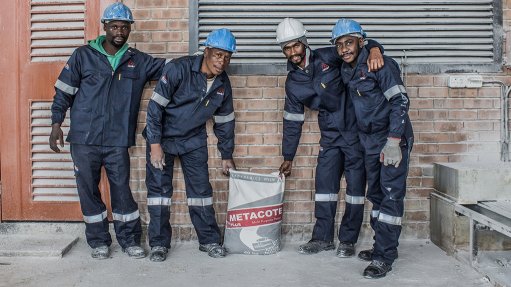
Metacote finishing plaster, skimming plaster and joining plaster produced by OMV
A South African gypsum producer has developed a new and locally-produced line of finishing plaster, skimming plaster and joining plaster for the construction sector. The product is expected to largely replace imported finishing plaster products which may not be as well suited to local conditions.
Leading producer of synthetic gypsum, OMV has spent the last few years upgrading its Potchefstroom plant for this purpose and its plant is now managing the whole value chain including raw materials, processing, packaging and warehousing, enthuses the company. The Metacote line of plaster is being rolled out to major building material outlets in 40 kg and 20 kg bags.
Up until now OMV has been a raw product supplier of calcium sulphate dihydrate, mainly to the cement and agricultural sectors. The company has recently integrated operations to add greater value, which involves taking the raw product through four value-adding stages to its final bagged product.
“The material first undergoes calcination at our calcining plant, then a blending stage to enhance the mix with additives for smoothness and performance,” explains OMV. “The resulting product can then be bagged, and finally reports to the warehouse. We conduct all these phases under one roof.”
The whole process is conducted under one management structure and transportation costs between stages are elimated, making the production more cost-effective. The integration has also reduced the production timeframe from up to six weeks to three days, which contributes to improved quality control as problems in the value chain can be quickly traced and resolved.
The company’s just-in-time production system means that it does not need to hold excessive stock volumes, which can further optimise its cost base.
The OMV product aims to replace many imported finishing plaster products which may not be well suited to local conditions.
The company further highlights the growth potential for high-grade chemical gypsum in the South African market, asserting that in markets such as Europe, plaster is used extensively instead of cement in building construction.
Gypsum is also seen as an environment-friendly alternative and is sometimes referred to as “green cement”. The physical temperatures generated in gypsum production are only 150 oC to 160 oC, compared to over 900 oC generated in the production of cement, leading to the generation of far lower carbon dioxide levels.